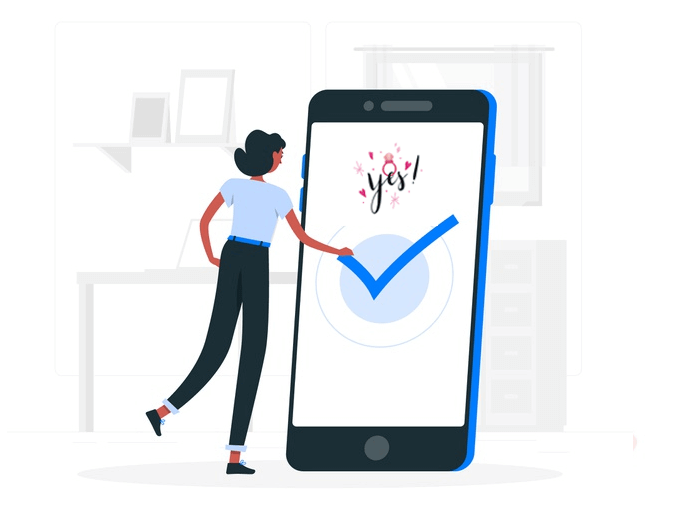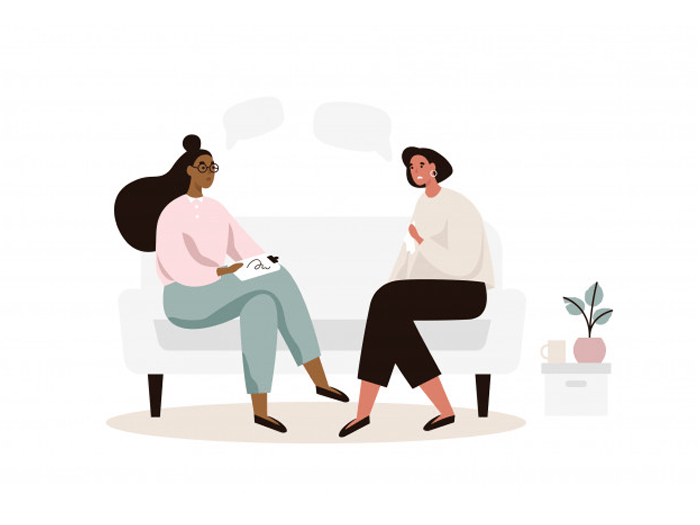It is an undeniable fact that Customer is the most valuable asset to every business. Without them there will be no business existence. In fact, customer’s service is the integral part of a business sucess.
Let me put it straight; Your customer is the Boss and not you.
To that end, knowing what drives your customer’s paying actions is a key to your revenue growth.
In this article, I will be sharing with you 10 steps to your customer’s paying power which is pertinent to your revenue growth.
STEP 1: Listen To Customer’s Feedback

You are in business to service the needs of customers, and you can only achieve that better if you can figure out what your customer’s want are. One way to do this, is to listen to your customer’s feedback.
HundredX, a company that creates listening/feedback software for enterprise business clients conducted a survey on more than 500 business executives and found that 94% believed the following statement: “Listening to customer feedback is increasingly critical to the bottom line.”
Indeed, it is the fuel for your revenue growth.
When you truly listen to customers feedback, you’re well informed of what they want and provide good services that satisfy their wants.
However, it’s helpful to differentiate between a customer’s want and need. A want is much more powerful than a need. if you sell to someones needs, they will always buy the lowest cost solutions that meets their needs.
But when you sell to their wants, you will experience a rapid growth in sales.
But how can you do that?
Simple! Take the time to identify customer wants by asking questions and concentrates on what the customer is really saying.
Listen to their words, the tone of voice, body language, and most importantly, how they feel.
Nothing makes a customer more happier than feeling that thay are being heard. HundredX cites a report from Applied Marketing Science which found that customers who receive responses to their tweets are willing to spend 3-20% more on average-priced items.
Thus, a happy customer worth more than a satisfied consumer. So beware of making assumptions, thinking you intuitively know what your customer wants when in reality you don’t.
Here are Some simple ways on how you can receive customer feedback:
- Following up with customers after a sale (email or phone call)
- Sending your customers surveys
- Having a comment or service level satisfactory machine at check out
- Offering customers 10% off their next purchase if they answer an online questionnaire about your business
- Asking customers that switched service providers what made them switch
- Having employees, managers and owners available and physically visible to personally talk to customers face-to-face
STEP 2: Identify And Anticipate Your Customer’s Wants

Did you know that customers don’t buy products or service? They buy emotional satisfaction and solutions to their wants. Most customer wants are emotional rather than logical.
No matter how good your product or service may be, the simple truth is that no one will buy it if they don’t want it or believe that they need it. And you won’t persuade anyone to buy what you’re offering unless you understand what it is that they really want.
The more you know your customers, the higher you chances to anticipating their wants.
So it’s well worth making the effort to find out:
- Who They Are
For individuals, find out your customers’ gender, age, marital status and occupation. For businesses, find out what size and kind of business they are. For example, are they a small private company or a big multinational? - What They Do
For individuals, it’s worth knowing their occupations and interests. For businesses, it helpfull to have an understanding of what their business is trying to achieve. - Why They Buy
Know why customers buy a product or service, then, match their wants to the services your business offers. - When They Buy
Approach a customer just at the time they want to buy, you will massively increase your chances of them buying from you - How They Buy
Learn how customer buys. For example, some people prefer to buy from a website, while others prefer a face-to-face meeting. - How Much Money They Have
Match what you’re offering to what you know your customer can afford. - What Makes Them Feel Good About Buying
Know what tickles your customer, and serve them in the way they prefer. - What They Expect of You
Understand what your customer expect from you. For example, if your customers expect reliable delivery and you don’t disappoint them, you stand to gain repeat business. - What They Think About You
Make your customer think good of you. If your customers enjoy dealing with you, they’re likely to buy more. - What They Think About Your Competitors
If you know how your customers view your competition, you stand a much better chance of staying ahead of your rivals.
Once you have these knowledge, you can use it to influence your customer paying power in their best interest.
STEP 3: Always Make Customers Feel Truly Valued

I guess you’re familiar with the three words: “Dear valued customers…” Those three words are often used to begin a notice or anouncement, expecially when businesses are about to deliver bad news.
Making your customers feel valued is so much more than the “Dear valued Customers” words on a piece of paper and should be done without impending bad news.
When customers feel valued, they become loyal and always willing to take a paying action.
Here are a few ways to make your customer feel truly valued:
- Pay Attention To Your Customer Details
It’s important for any good business owner to try to get into the mind of potential customers. The only way to do that is to pay attention to their details.
For example, if you are pharmacist, and a customer says they are allergic to a particular drug, it is your duty to ensure that your workers pays attention to the details that will keep that customer from having a potentially deadly reaction.
These are the details embedded in the service you are providing. Owners who fail to take customer’s details into account are actually setting up their business for failure.
You never want your customers to feel like they’ve been ignored! so start paying attention to you rcustomer’s details.
This attention to detail shows the customer that you are listening, and in turn, makes them feel truly valued.
- Use Their Name
Remember customers are human too. Everyone loves to be acknowledged, even in little ways. One thing you can do to make sure you treat your customers like real people, and not just robots with their names on your computer screen, is to Use their name.
Dale Carnegie once said “A person’s name is to him or her the sweetest and most important sound in any language.” and in the world of customer service, it couldn’t hold more truth.
You can use your customer’s name in a number of different ways. For example: Say the customer’s name immediately upon meeting them for an appionment, Begin each email by addressing the customer by name, and at the end of the transaction use their name while thanking them.
STEP 4: Good Body Language

While verbal and written communication play a good part in the corporate world, it’s crucial not to overlook the importance of body language.
Non-verbal communication like the way you hold yourself in a meeting, or your ability to commit to eye contact can either inpend or enhance the message you’re sending.
Always display a good body language towards your customer. And be sure that it conveys sincerity. Most importantly, let your words and action be congruent.
Body language in business, sets the pace for people to communicate with others on a more friendly and deeper level. From your facial expressions to your body movements.
According to studies from language and psychology experts, body language might even have a bigger impact on a conversation than the words that you choose.
Over 55% of all messages come from non-verbal cues like posture and gesture, and Studies show that people remember 10% of what they hear and 20% of what they read, but about 80 percent of what they see and do.
When it comes to using body language for business, here are some of the most critical characteristics that you can convey:
- Confidence: Throughout history, entrepreneurs and business leaders project confidence in the way that they hold themselves. Just look at Richard Branson of Virgin Media. He shows confidence wherever he goes with plenty of open body language and big smiles.
-
Assertiveness: Assertiveness is a crucial part of body language in business communications. Whether you’re selling to consumers or trying to prove the value of a new business strategy to shareholders, it’s important to be assertive.
-
Interest: Communication works best when everyone involved is interested in what the other person is saying. Showing an active interest in every conversation indicates professionalism, which is ideal for building better consumer and employer brands.
- Intelligence: Body language methods can even make people seem more intelligent. Nodding along and showing comprehension with complex topics, or schooling your face not to show confusion during a complicated situation can be an essential way to “save face” in business communications.
- Empathy: Just as it’s important to show your IQ with body language in business, it’s also valuable to demonstrate your “EQ” or emotional intelligence. Professionals who can decipher and respond to the emotional needs of their colleagues and customers have the best chance of thriving in today’s competitive marketplace.
STEP 5: Customers Understanding of Your System

There should be no power shift between your brand and customer. Help customers understand your system.
Your business may have the world’s best systems for getting things done smartly, but if customers don’t understand them, they can get confused, and that can make you miss a great deal.
Take time to explain how your systems work and how they simplify transactions. Use simple and clear words.
Business that put their customer at the heart of their sytem or process will experience an increase in customer lifetime value and a reduction in churn.
STEP 6: Don’t Neglect The Power of “YES”

If you own a business or work in an environment where customer satisfaction is paramount, you may be no stranger to the concept of the power of “yes.”
I had the pleasure of being on the receiving end of some exemplary “yes-thinking” action. I was so impressed by the lengths that my team went in order to deliver “yes” for my customers, that it inspired me to reflect on what I’ve learned about the power of yes in my own business life.
No doubt, yes is a powerful word but if you’re unable to fulfil a request or you don’t think you can fulfil the request. Help them find an alternate remedy. Whether that remedy is your business or another, they will appreciate the extra mile you went to help them, and will recommend your business to their network.
Always look for ways to help your customers. When they have a request (as long as it is reasonable) tell them that you can do it. Figure out how afterward. Look for ways to make doing business with you easy. Always do what you say you promise.
STEP 7: Know How To Apologize

When something goes wrong, apologize. It’s easy, and customers like it. You already know how it goes:
“We apologize for the inconvenience.” “Sorry for the trouble, we are looking into this matter.”
Apologies display empathy–something experts credit as a force that drives business forward. That could also help secure higher business deals and drive company growth.
You’ve heard that “the customer is always right.” Not everyone agrees. Well, i will say that Customer may not always be right, but must always win.
Pete Fader, Professor of Marketing at the University of Pennsylvania, shares why in his book Customer Centricity.
It’s not always easy to identify instances when your business is at fault compared to times when a customer’s demands are unfair..
Still, there is a time and place where apologizing is critical.
I mean instances where you’re responsible for poor customer or user experience. something that 55% of customers are willing to pay more for (if the experience is guaranteed).
Even the largest ecommerce website Amazon fell into such situation and apologize for delayed shipping.

So deal with problems immediately and let customers know what you have done. Make it simple for customers to understand. Value their complaints, it gives you an opportunity to improve. Even if customers are having a bad day, go out of your way to make them feel comfortable.
STEP 8: Give More Than Your Recieve

There is an old saying: It is better to give than to receive. And another old saying: The more you give, the more you get.
These are both true in life, and you’ll agree with me that every part of life is business. Giving is better part of the customer experience.
Customers like to receive, and when they do they return the favor by spending their money with you. We call it “The Law of Reciprocity”.
Zig Ziglar, the late and great motivational speaker summed it up well when he said, “You will get all you want in life if you help other people get what they want.
The future of all companies lies in keeping customers happy, so think of ways to elevate yourself above the competition.
Consider the following:
- What can you give customers that they cannot get elsewhere?
- What can you do to follow-up and thank people even when they don’t buy?
- What can you give customers that is totally unexpected?
STEP 9: Get Feedback Regularly

Its a good practice to get feedbacks regularly. One way to achieve that is to encourage and welcome suggestions from customers on how you could improve you business for better customer experience.
There are several ways in which you can find out what customers think and feel about your services.
These are:
- Listen carefully to what they say.
- Check back regularly to see how things are going.
- Provide a method that invites constructive criticism, comments, and suggestions.
STEP 10: Treat Employees Well

Did you know that Employees are your first customers and need a regular dose of appreciation.
Thank them and find ways to let them know how valuable they are to your business. Treat your employees with respect and chances are they will have a higher regard for customers. Appreciation stems from the top. Treating customers and employees well is equally important.
.